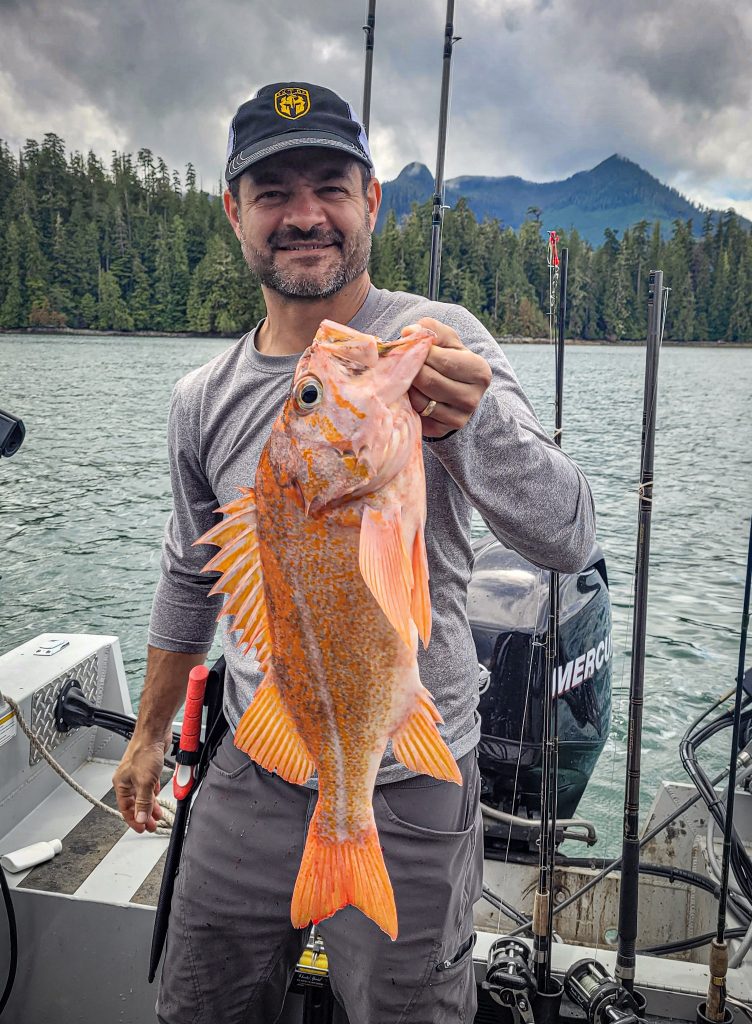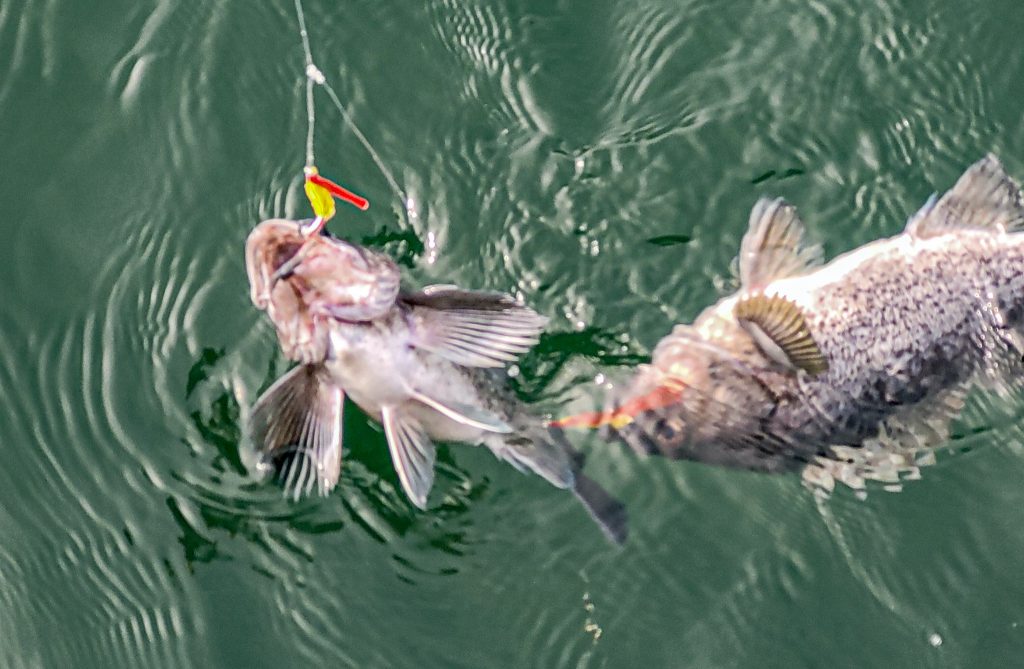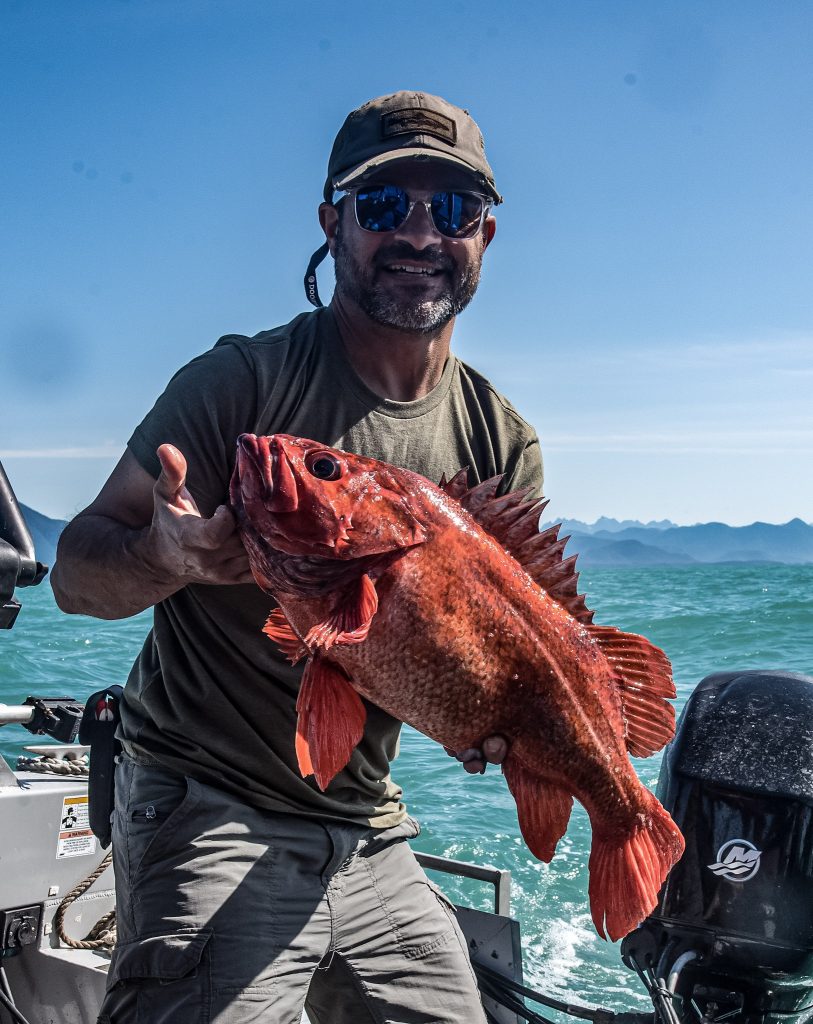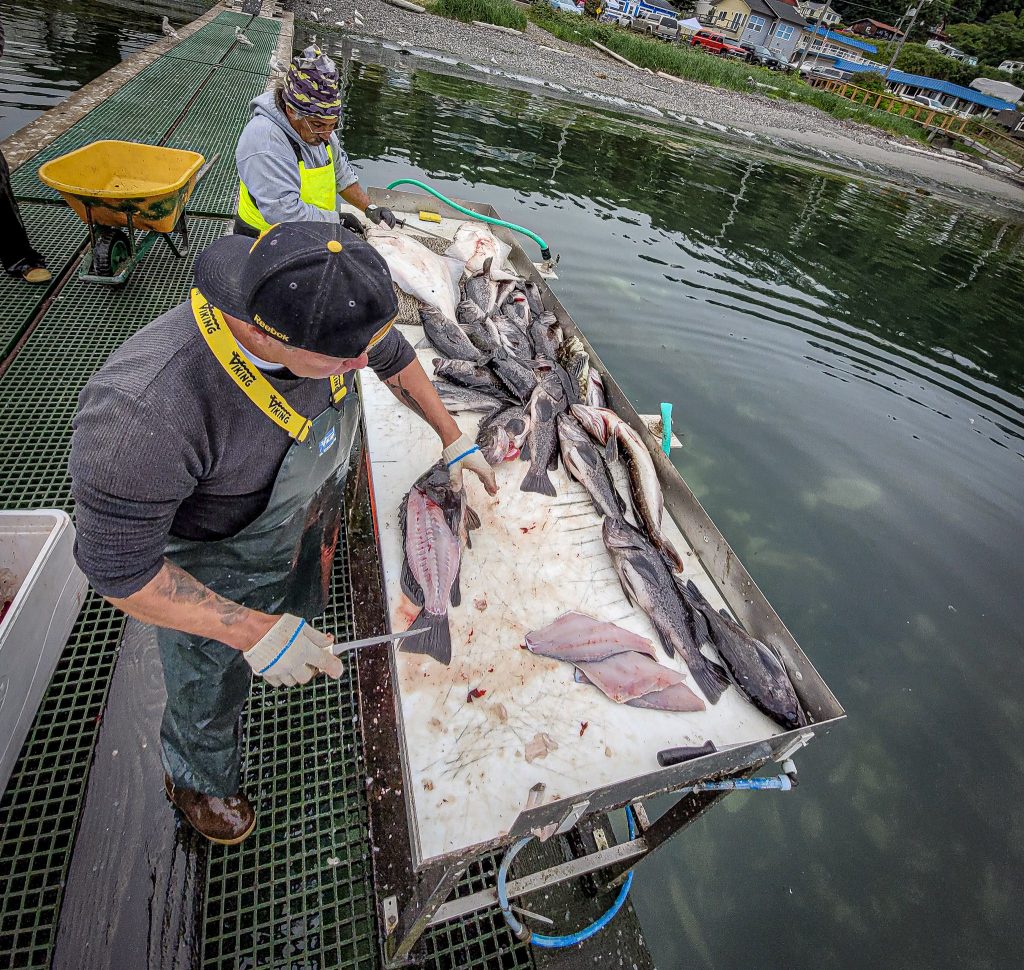Bottomfish Basics Leave a reply

Bottom Fishing Basics
By Jason Brooks
If you have been listening to the radio show these past few weeks then you have heard Nelly, Joey and myself talking about upcoming fisheries. One specifically keeps getting mentioned and that is bottom fishing, also known as rockfish or sea bass. It is a great fishery as well as provides some of the best tasting fish for the table. Rockfish can be plentiful and fun to catch but also a bit frustrating when you don’t find them. Here are some basic tips to find and catch good eating rockfish.

Find the Fish.
This might seem like a “no brainer” but rockfish can be finicky to find. One day they are there and the next day they are gone. Most likely it is the conditions that cause you to lose the fish but first you need to find them. They are called rockfish for a reason and that is because most species are found around underwater pinnacles, boulders, ledges and rock formations such as jetties or reefs. Some other manmade structures also hold rockfish such as sunken ships and habitat provided through conservation programs. You can also find them by happenstance.
One afternoon while trolling along the bottom of the ocean looking for chinook both rods went off the downrigger clips. Thinking we had hooked up on a salmon double instead we reeled in two large black rockfish. Looking back on the sonar and map it turns out we had narrowly passed by a small rock pile. A quick turn of the boat and we rapidly loaded up on our daily rockfish limit. Another time we were cruising back to the dock and noticed some fish surfacing just outside of the kelp. After pausing the boat it didn’t take long before we caught a rockfish on a twitched jig. A few minutes later we had our fish limits for the day, this was one of the craziest and fast paced times we filled out cooler full of “sea bass”.

Keep in mind certain species prefer different depths or structure. Once you find one variety you are likely to find the same species but even a short drift away you could find another variety. Some rockfish species will be with other like species such as canary, copper, black and blue and even some quillback species. Yelloweye, which cannot be kept, are often found deeper but so are vermillion and they both look alike. Knowing where you found which kind of fish will help you find them again at different locations with similar depths and structure.

Use the Right Gear.
When we found those surfacing rockfish we already had medium action casting rods rigged and ready to go. This was because we had tried fishing near the kelp earlier in the day. By pitching jigs to actively feeding fish we were able to catch them quickly. Sometimes you need to fish deeper waters and this often means using level wind reels spooled with braid and using a heavier jig. If you choose to use braid then it is smart to use a short leader of monofilament so if you hang up on the bottom you can break off easily. Braided line can cut you quickly if you grab onto it, and never wrap it around anything that can break, including your hand or fingers. Instead use a boat cleat to anchor the line. Treble hooks are often legal but not always the best option as you can lose jigs easily. Instead take the treble hooks off a dart or jig and use Gamakatsu assist hooks. These large hooks are tethered together with a strong braided line that you loop through the eye of the jig. This allows the jig to hit bottom and keep the hooks off of the structure. Rockfish have large mouths and usually attack the whole jig so the assist hooks work just as well as a hook on the bottom of the jig.
UV shrimp flies are one of the best lures to use and you can often use more than one on a line. Pre-tied shrimp fly rigs have two flies tied about a foot apart but can be tied on cheap monofilament or use substandard snaps which you don’t want if you suddenly hook into a toothy lingcod. You can make your own pretty easily and the individual shrimp flies are fairly inexpensive. Find ones that are tied with UV materials as they tend to “glow” underwater and draw the attention of rockfish.

Know the Water Conditions.
When fishing for rock fish one of the biggest factors between success and failure is keeping the boat over the fish. Be sure to check the tides and if it is a strong or large tide swing then it is probably best to stay home that day or only fish right at slack tide. Back to knowing where the fish are, if the tide is flowing then the fish often use the rock structures to hide and rest. If fishing a ledge then position the boat so it drifts along the ledge instead of across it if possible. If this is not possible then know that it will take a few drifts to catch fish and once the bite is “off” then move back over the ledge and start the drift again.
Wind is another factor as it can push the boat off the target. Sometimes keeping the kicker motor in gear at idle is all it takes to steady the boat, just be sure to keep all lines away from the propeller. You can also negate wind and currents by using heavier weights and jigs. It can take some of the fun out of the fishing if you use too stout of gear but it can also provide a better chance at catching some fish.
One tip when fishing a pinnacle in windy conditions or stronger tides is to fish away from the structure. Start shallower and let the boat drift away from the pinnacle. You are less likely to lose gear and catch more fish. If you drift towards a pinnacle then you are likely to hang up and lose gear.
If you anchor then be sure you know how to do so and what the bottom structure is made of. It is not recommended to anchor if it is windy or there is a strong tide change. It is best to use the motors to keep the boat in position or just do several drifts.

Know the Regulations.
There are some very specific rules and regulations when it comes to bottom fishing. One universal rule is having a descender device onboard and be sure to use it. Rockfish are subject to barotrauma as they come up from the depths. This is where their air bladder which is used to control buoyancy in the water column expands as it comes up quickly. Knowing the rules also means knowing the species as certain ones are off limits, such as Yelloweye and in Oregon some quillback species. In Washington a new rule was put into place where certain species such as copper, canary and a few other rockfish cannot be kept during the summer months. Washington also has a depth restriction and Oregon has a gear restriction. It can be a bit confusing especially when the bite is on and you are catching multiple species. Take the time to slow down, ensure which species you caught and if it can be kept and also use the descender device correctly when returning fish back to the depth they are caught at.

Bottom fish are great eating and a lot of fun to catch. These tips will help you catch more fish and have a great time, just be sure to fish responsibly and protect the resource.

